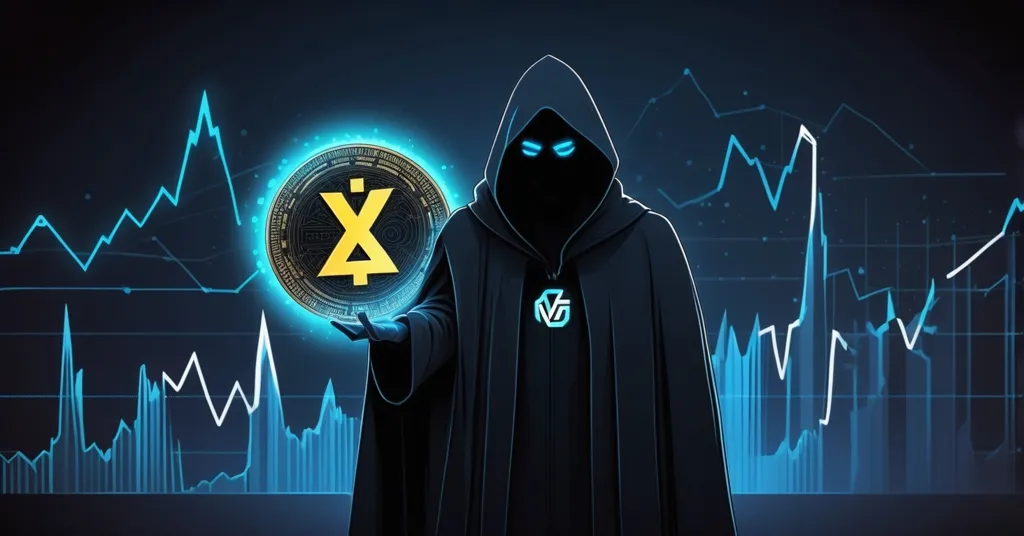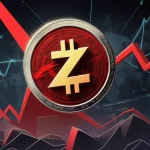Verge (XVG) Price Prediction 2025-2030: Can This Privacy Coin Hit $1 or Is It Pure Hype?

Verge (XVG) Price Prediction 2025-2030: Can This Privacy Coin Hit $1, or Is It Just Altcoin Hype?
Verge (XVG), a privacy-focused cryptocurrency born in 2014 as DogeCoinDark before its 2016 rebrand, is back in the spotlight with bold price predictions for 2025 through 2030. Promising anonymous transactions and recent moves to stay relevant, Verge is stirring up chatter among altcoin enthusiasts. But are these forecasts grounded in reality, or are we just witnessing another speculative fever dream in the crypto wild west?
- Current Price: Verge (XVG) hovers at $0.00645963 based on recent data.
- 2025 Forecast: Some predict a high of $0.03508, with an average of $0.02590.
- 2030 Speculation: Optimists see XVG reaching $0.30, though doubts linger heavily.
Unpacking Verge and Its Privacy Promise
For those new to the space, Verge aims to provide private, untraceable transactions using technologies like Tor and I2P—tools that obscure user identities and locations online, much like a digital invisibility cloak. This puts Verge in the privacy coin niche alongside heavyweights like Monero (XMR) and Zcash (ZEC), where the mission is to shield users from surveillance in an era of rampant data tracking. Back in the euphoric 2017 bull run, XVG soared to an all-time high of $0.3006 on December 23, a figure that feels like ancient history with its current price at just over half a cent. Still, with privacy becoming a hotter topic as governments and tech giants tighten their grip on personal data, Verge’s underdog story could have a second act—if it can overcome its baggage and cut through the noise.
Price Predictions: Moonshot or Mirage?
Let’s tackle the numbers head-on. Some forecasts suggest Verge could hit a high of $0.03508 by the end of 2025, with a low of $0.009870 and an average of $0.02590. Peering further into the crystal ball, the most bullish claim pegs XVG at $0.30 by 2030—a near mirror of its historic peak. As a champion of decentralized disruption, I’d love to see an altcoin David slay a few Goliaths, but let’s not drink the kool-aid just yet. These figures scream speculation with little to no backing from hard data like transaction volumes, user adoption, or developer momentum. More conservative outlooks, like Changelly’s projection of a 2025 high at just $0.00974, paint a far less rosy picture. A leap to $0.30 in six years would demand a seismic shift in market dynamics or utility—think a market cap ballooning to billions, which, given Verge’s current standing, feels like betting on a lottery ticket during a thunderstorm.
To put this in perspective, Verge’s circulating supply is over 16 billion tokens. At $0.30, that implies a market cap of nearly $5 billion—a valuation on par with far more established projects today. Compare this to Monero’s growth trajectory, which, despite being the privacy coin king, has taken years to build trust and adoption for a $3 billion market cap. Without a groundbreaking catalyst, Verge hitting such heights by 2030 is wishful thinking at best, outright shilling at worst. I’m not here to peddle empty promises—crypto investors deserve better than baseless hype.
Verge’s Recent Moves: Progress or PR?
So, what’s fueling any optimism around Verge? The project has been busy, at least on paper. Reports point to expansions onto major blockchains like Binance Smart Chain, Polygon, and Base Network, enhancing cross-chain compatibility. For newcomers, this means Verge’s token can interact across different blockchain ecosystems, potentially boosting liquidity and ease of use. Think of it as making your local currency spendable in more countries—a smart move if it drives adoption, though hard numbers on transaction growth post-integration are frustratingly absent.
Software upgrades from version 7.8.0 to 7.11 have also rolled out, though details are thin. Are these tweaks improving transaction speeds, tightening security, or just cosmetic? Without transparency, it’s hard to gauge impact. On the trendier front, Verge launched the XVG Apes NFT collection. Non-fungible tokens, or NFTs, are unique digital assets often tied to art or collectibles, and crypto projects jump on this bandwagon to attract buzz. But let’s be real—will XVG Apes be prized treasures or just pixelated relics in a bear market dump? Partnerships with new wallets and payment platforms are also mentioned, yet specifics on who’s signing up or how it expands Verge’s reach remain elusive. These steps signal an attempt to stay competitive, but without measurable user engagement, it’s more sizzle than steak.
The VGX Mix-Up: A Sloppy Detour
Here’s a quick but necessary detour: some discussions confusingly mix Verge (XVG) with VGX, a token tied to the Voyager Foundation (formerly Voyager Digital, post-bankruptcy). VGX is pivoting to Web3 gaming utility—think in-game rewards or staking perks—and has zero relation to Verge’s privacy mission. This error likely stems from ticker similarity or careless reporting, but it’s the kind of sloppiness that can mislead investors. Stick to XVG on exchanges like Binance, Bittrex, Bitvavo, or HitBTC, and don’t get derailed by unrelated noise.
Verge vs. Privacy Titans: A Tough Arena
Verge doesn’t operate in a vacuum—it’s scrapping for relevance in a brutal privacy coin showdown. Monero reigns supreme with mandatory privacy features like ring signatures (a cryptographic trick that mixes a sender’s transaction with others to hide their identity) and stealth addresses (ensuring recipient details are obscured). Zcash offers optional privacy through zero-knowledge proofs, a math-heavy method to verify transactions without revealing specifics. Verge, by contrast, provides optional privacy via Tor and I2P, which critics argue is less robust since users must opt in, potentially leaving gaps for the less tech-savvy. Community sentiment on platforms like Reddit often relegates Verge to also-ran status, with many citing Monero as the gold standard for true anonymity. If you’re hunting for the best privacy cryptocurrencies heading into 2025, Verge’s optional approach struggles to match these titans’ airtight offerings.
Then there’s history. Verge suffered a notorious 2018 hack—a 51% attack where bad actors exploited a network bug to mine blocks at an absurd rate, essentially stealing millions in XVG. While patches were deployed, the incident dented trust, and skeptics question if Verge has fully fortified itself since. Developer activity and grassroots support, often visible through GitHub commits or X chatter, also seem lackluster compared to Monero’s vibrant ecosystem. Without a clear edge or renewed community momentum, Verge risks fading into obscurity, no matter how many NFTs it mints.
Regulatory Storm Clouds and Market Risks
Privacy coins like Verge face a gauntlet of risks that no amount of bullish forecasting can ignore. Regulatory scrutiny is intensifying globally, with jurisdictions like South Korea banning privacy coins outright and U.S. authorities ramping up anti-money laundering (AML) and know-your-customer (KYC) pressures. Major exchanges have delisted privacy-focused tokens in recent years, citing compliance fears—think Monero vanishing from platforms like Kraken in certain regions. Verge, already a smaller player, could easily get caught in this crossfire, limiting its accessibility and utility. If you can’t trade or spend XVG easily, what’s the point?
Beyond regulation, adoption remains a hurdle. Real-world use cases for privacy coins are niche—often tied to users needing anonymity for legitimate (or, let’s be honest, sometimes illicit) reasons. Verge lacks the merchant integrations or mainstream recognition to drive organic demand, unlike Bitcoin’s growing acceptance as a store of value. Add the crypto market’s notorious volatility, where altcoins can spike on a tweet and crater on a rumor, and investing in XVG starts looking like a high-stakes gamble. I’m all for challenging the financial status quo, but blind bets on underdogs won’t cut it without fundamentals.
The Bull Case for Verge: A Glimmer of Hope?
Playing devil’s advocate, let’s explore why some might still back Verge despite the red flags. Privacy is a fundamental right, and with data scandals or government overreach making headlines daily, demand for anonymous transactions could surge. If Verge positions itself as an accessible, user-friendly option—perhaps through those new wallet partnerships or cross-chain integrations—it might carve a niche among casual users intimidated by Monero’s complexity. A killer collaboration or tech breakthrough, say a novel privacy protocol, could also spark a rally. From a Bitcoin maximalist lens, while BTC remains the ultimate decentralized money, it doesn’t prioritize anonymity. Privacy coins like Verge could fill that gap for specific use cases, assuming they scale and earn trust. That said, these are big “ifs”—don’t hold your breath for a miracle.
Key Takeaways and Questions for Crypto Enthusiasts
- What drives the Verge (XVG) price predictions for 2025 and 2030?
Forecasts of $0.03508 by 2025 and $0.30 by 2030 stem from cross-chain expansions on Binance Smart Chain and Polygon, software updates, NFT launches like XVG Apes, and hinted partnerships. Yet, without concrete adoption metrics or impact data, these targets feel more like fantasy than fact. - Is Verge (XVG) a realistic long-term investment for crypto portfolios?
It’s a speculative shot at best. Verge aligns with decentralization and privacy ideals, but fierce competition from Monero, regulatory risks, and past security lapses make it a risky play. Consider it only a tiny sliver of a diversified stash if you’re betting on privacy’s rise. - How does Verge (XVG) stack up against privacy coins like Monero and Zcash?
Verge’s optional privacy via Tor and I2P pales next to Monero’s mandatory anonymity through ring signatures or Zcash’s zero-knowledge proofs. Smaller community trust and adoption further dim Verge’s shine in this competitive niche. - What are the biggest risks for privacy cryptocurrencies like Verge?
Regulatory crackdowns over money laundering concerns threaten exchange listings and usability. Security vulnerabilities, like the 2018 hack, and scant real-world adoption add to the perils in a volatile altcoin market. - Why the mix-up between Verge (XVG) and VGX in crypto talks?
Likely due to ticker similarity or sloppy reporting, VGX ties to Voyager Foundation’s Web3 gaming focus, unrelated to Verge’s privacy goals. Double-check tickers to avoid costly confusion when trading.
The Bigger Picture for Verge and Privacy in Crypto
Zooming out, Verge embodies the raw, experimental ethos of crypto—pushing for freedom and privacy in a world increasingly hostile to both. As surveillance grows and financial systems cling to control, projects like this carry a rebellious spark worth rooting for. Yet, the path to relevance demands more than software patches or NFT gimmicks. Investors eyeing XVG for a quick 2025 flip or a 2030 jackpot must temper hype with harsh realities: a crowded field, regulatory minefields, and a market that chews up altcoins without mercy. If you believe in the long fight for decentralization, Verge might deserve a speculative nod in a broader portfolio—just don’t stake your future on it. In this space, due diligence isn’t optional; it’s survival. Separate signal from noise, and tread carefully with this privacy underdog. Tomorrow’s dark horse can just as easily end up a forgotten footnote.



